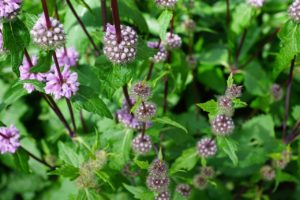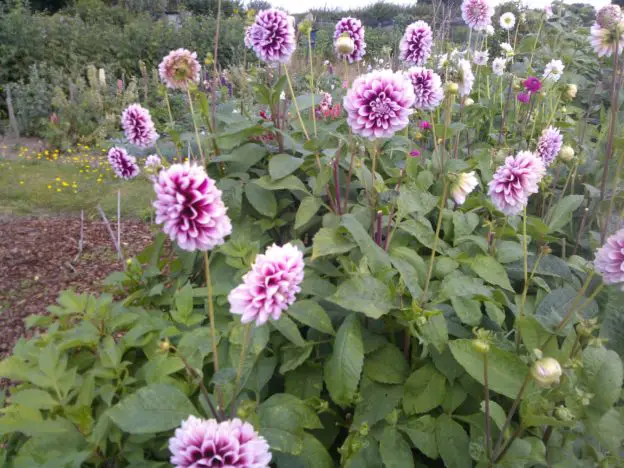One of my older posts focused on Poached Egg Plant Companion Plants, this got me thinking about using other flowers as companion plants. What flowers to use and Why use them?
Exactly what are the benefits? So in this post that’s what I’m going to find out.
Why Use Flowers In The Vegetable Garden?
Flowers are good to look at, they smell nice and they give a garden a pleasant appearance. As will soon become apparent, they also have many helpful benefits in the vegetable garden. The secret as always is placing the right flowers with the right vegetables.
Flowers As Companion Plants
If you take a walk in the wild anywhere in the world, the chances are you’ll see both flowers and vegetables growing side by side. I do not believe there is anything left to chance in nature, so if we want the best from our gardens then we should emulate nature as much as possible.
Once you start to look at things from a natural point of view, some benefits become obvious. Flowers give off an attractive scent and they look attractive too, not only to us but also to pollinating insects. Bees, Butterflies, and Moths will all come to feed on the nectar that flowers produce and if some of those flowers belong to say Runner Beans or Squashes that also need help with pollination so be it.
Friends With Benefits

Some bedfellows are more advantageous than others, and below we will see some incredible planting combinations that will change the way we garden forever. Some like the Poached Egg Plant attract Hover Flies and the larvae of the hover fly feeds on Aphids. Knowing this I grow Poached Egg Plants wherever I’m going to sow anything that aphids particularly attack, Including Beans and Tomatoes.
Others actually improve the flavour of the vegetable or fruit they are grown near. Take Basil for example, grown alongside Tomato plants Basil gives the tomato a much improved taste.
Beneficial Flowers And Where To Plant Them
1. Basil Repels Aphids, Whiteflies, Spider mites, Horn worms (Tomato caterpillar). Attracts Bees and other pollinators. Plant with Tomatoes, Asparagus and Cucumbers.
2. Chives Repel Aphids, confuse Carrot fly. To improve the flavour of carrots and Tomatoes add Chives to the patch.
3. Dill Repels Aphids, Spider mites, Insects that attack Squashes and Insects that attack Cabbages. Attracts beneficial insects such as, Predatory Wasps, Bees, and Hover flies. Plant with Asparagus, Beetroot, Brassicas, Celery, Sweetcorn, Cucumbers, Squashes and onions.
4. Marigolds Repel Nematodes, Tomato Caterpillars and Slugs. Plant with Carrots, Cucumbers, Beans, Brassicas, Lettuce, Peppers, Potatoes and Tomatoes.
5. Nasturtiums Use as a sacrificial plant to Aphids, Whiteflies, Cabbage white Butterflies, Squash and Cucumber beetles. They also deter the spread of fungal infections in the soil. Grow with Broccoli, Cabbage, Cucumbers, Squashes, Courgettes, Radishes, Potatoes and Tomatoes.
6. Petunias Repel Asparagus beetles, Leaf hoppers, Aphids, Mexican Bean beetle and Tomato Caterpillars. They attract Bees and other helpful pollinators. Plant with Brassicas, Beans, Basil, Tomatoes, Peppers, Sweetcorn and Grape vines.
Plants As Insect Repellents

MInt
As we don’t take to every plant, it seems our insects don’t either.
If Ants are a problem in your garden try planting Garlic, Mint, Tansy or Penny Royal.
Mice don’t seem to like Mint or Wormwood, and snails tend to keep away from Garlic.
Mosquitoes don’t like Bee balm, catnip, citronella, lemon balm, marigolds, pennyroyal, tansy or wormwood.
Spiders keep away from Nasturtiums and onions, and Moths tend to keep away from Lavendar, Mint, Rosemary, Sage and Thyme.
So there are a few of my tips for organic pest control in the vegetable garden and why you should grow flowers amongst your vegetables. Have you any tips or particularly effective remedies? Please comment below.

